Samsung QN95C review: Mini-LED marvel looks more like an OLED
Samsung’s 2023 Neo QLED 4K flagship doubles the number of dimming zones over last year's model to rival the best OLEDs

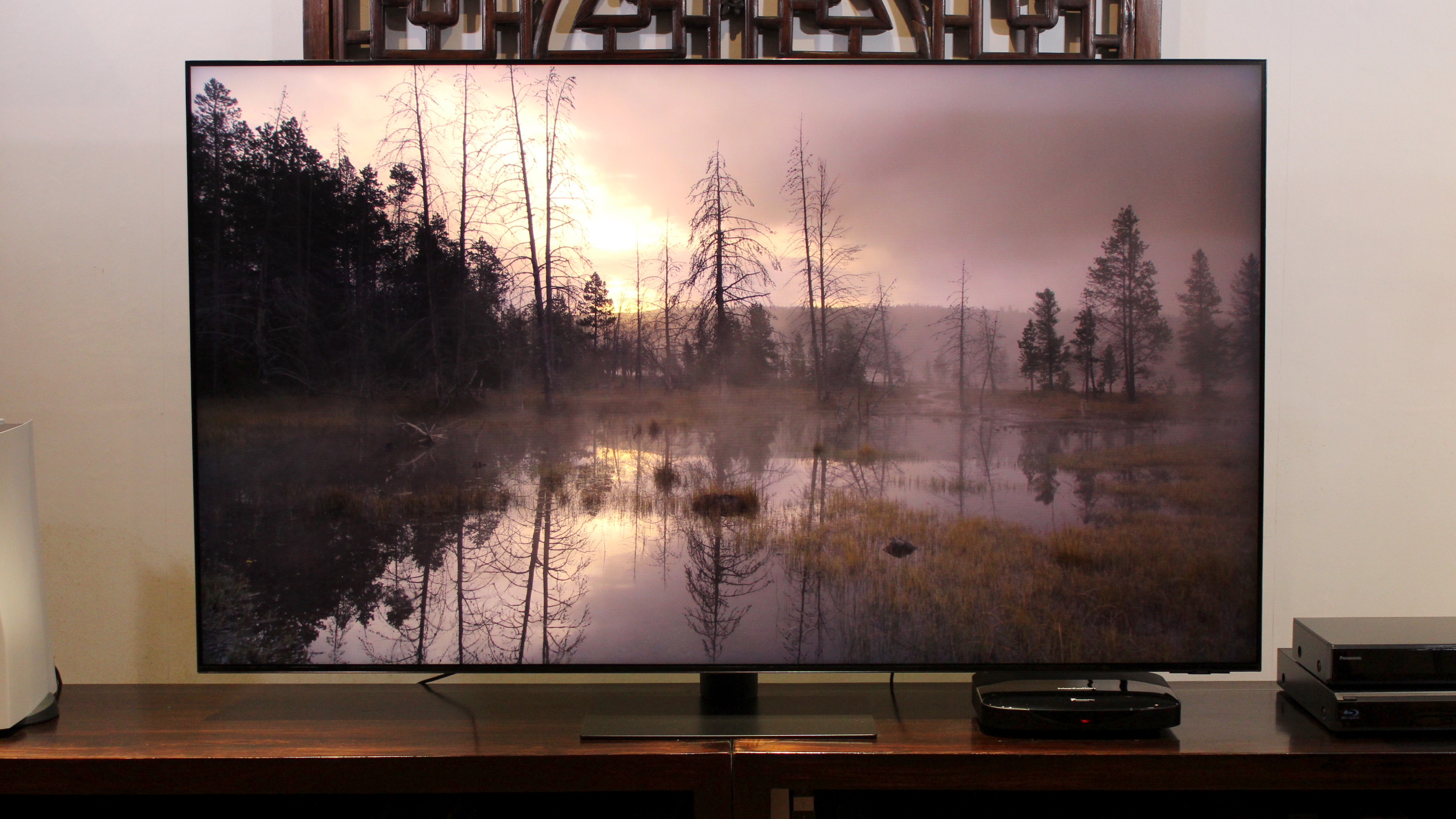
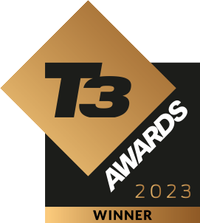
The Samsung QN95C doubles the number of zones in its Mini LED backlight compared to last year's 'B' model, and when combined with class-leading local dimming and image processing, it's a TV that delivers a performance to rival the best OLEDs. An elegant design, solid build quality, serious smarts, comprehensive streaming apps, and extensive gaming support round out what is a very desirable high-end telly.
-
+
Stunningly bright and colourful images
-
+
OLED-like black levels and contrast
-
+
Extensive gaming features
-
-
One Connect box is no more – ports on TV body
-
-
Local dimming can occasionally get tripped up
-
-
No Dolby Vision HDR
Why you can trust T3

Samsung’s 2023 Neo QLED TV flagship might not seem much different from last 2022's QN95B model, but look under the hood of the QN95C and you’ll find a 4K TV designed to compete with the best OLED TVs out there. It’s a major evolutionary step for this non-OLED technology, at the heart of which is an upgraded Mini-LED backlight system, marking it out as one of the best TVs of the year.
The QN95C boasts nearly double the number of independent dimmable zones compared to the earlier QN95B, and when combined with Quantum Dots (where the 'Neo QLED' name comes from) for purer colours, plus peerless AI-enhanced processing, the result is a smart TV capable of breathtaking images.
SAMSUNG QN95C: PRICE & RELEASE DATE
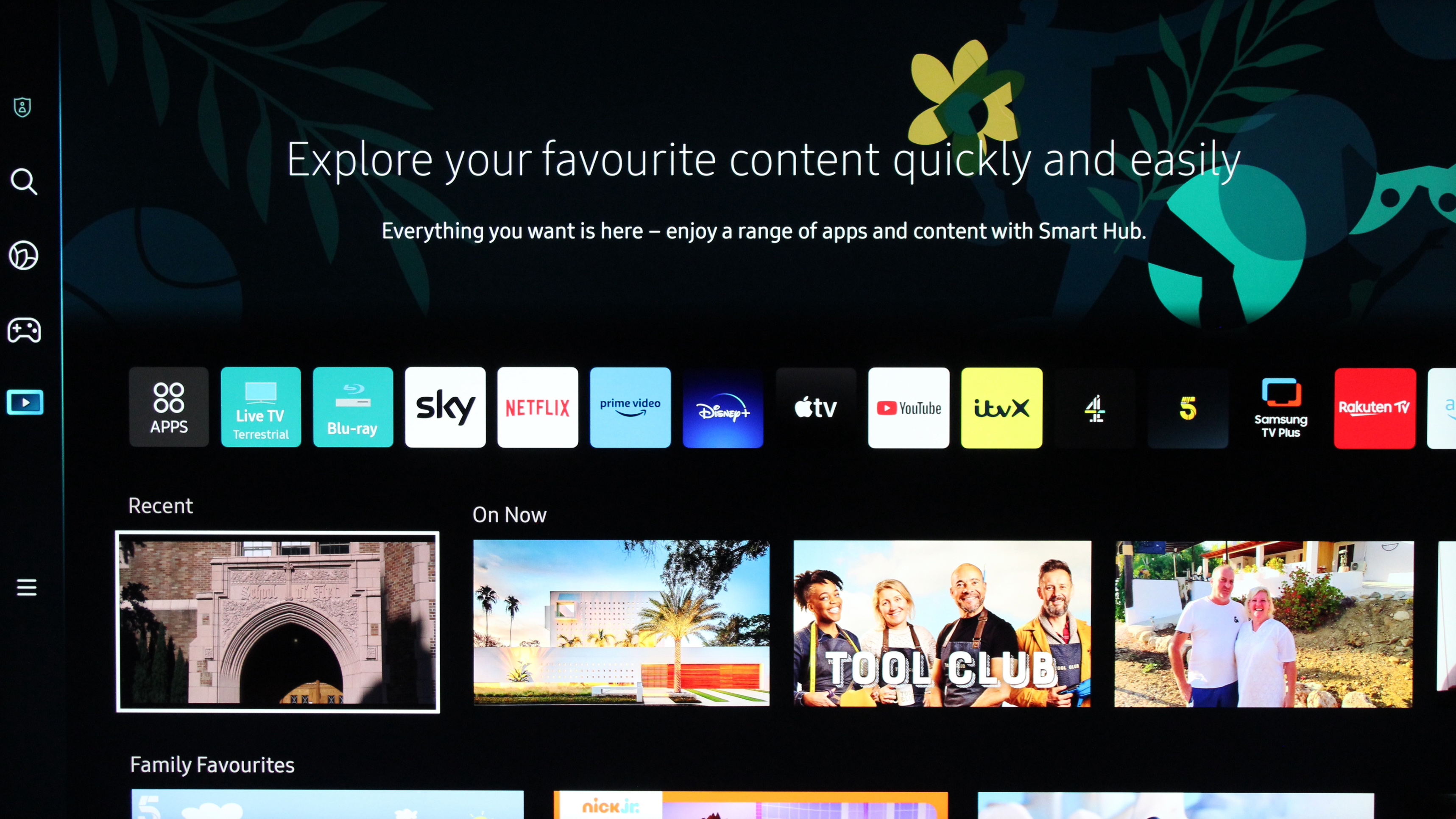
The Samsung QN95C is now available for pre-order and comes in four screen sizes: the 55-inch Samsung QN95C, which costs £2,799; the 65-inch (reviewed here) which retails for £3,699/$3,300; the 75-inch, priced at £4,999/$4,200; and the 85-inch that’ll set you back £6,999/$5,800.
SAMSUNG QN95C REVIEW: FEATURES & WHAT’S NEW?

The Samsung QN95C offers a feature set that’s very similar to the previous generation, but there are a few notable changes. First of all, the number of independently dimmable zones in the Mini-LED backlight has nearly doubled, with a total of 1,344 (48 x 28) zones by our count.
When you combine all those zones with Samsung’s class-leading local dimming algorithm, the result is a stunning picture with deep blacks and clearly defined shadow detail. Add in QLED’s inherent brightness, and you have a contrast performance that equals, if not betters, OLED.
Quantum Matrix Technology and Shape Adaptive Light control further enhance the backlight performance, with a delivery that’s more precise and efficient, while the new Real Depth Enhancer combines object detection and image manipulation to create greater depth and dimensionality.
In addition, 14-bit contrast mapping brings out further detail in the shadows, while Samsung’s latest AI-enhanced Neural Quantum Processor adds cutting-edge upscaling and processing that gets the best from highly compressed standard definition to native 4K resolution content.
The HDR presentation is also class-leading, with Samsung claiming a peak brightness of over 2,000 nits and a 100% colour volume. For high dynamic range formats the QN95C supports HDR10, hybrid log-gamma (HLG) and HDR10+ (Adaptive and Gaming), but sadly Samsung still doesn’t offer Dolby Vision (no surprises there, we don't see that changing any time soon – or ever, really).
Samsung does at least include Dolby Atmos, and the Object Tracking Sound Plus system uses a 4.2.2-channel speaker layout with height drivers. There’s also Space Fit Sound for room correction, and Q Symphony for seamless integration with supporting Samsung soundbars.
One new feature is the inclusion of a slim-fit camera in the box. The idea of making video calls or hand gesture controls may seem rather retro at this point, but a camera can be useful with apps like Google Meet, Workout, and Samsung Health, along with the two-screen Multi View feature.
Another useful feature is Samsung’s Smart Calibration app, which allows you to get closer to the industry standards by automatically calibrating the TV using a supporting smartphone. It’s very clever, and it actually works, although the Filmmaker Mode will also get you in the ballpark.
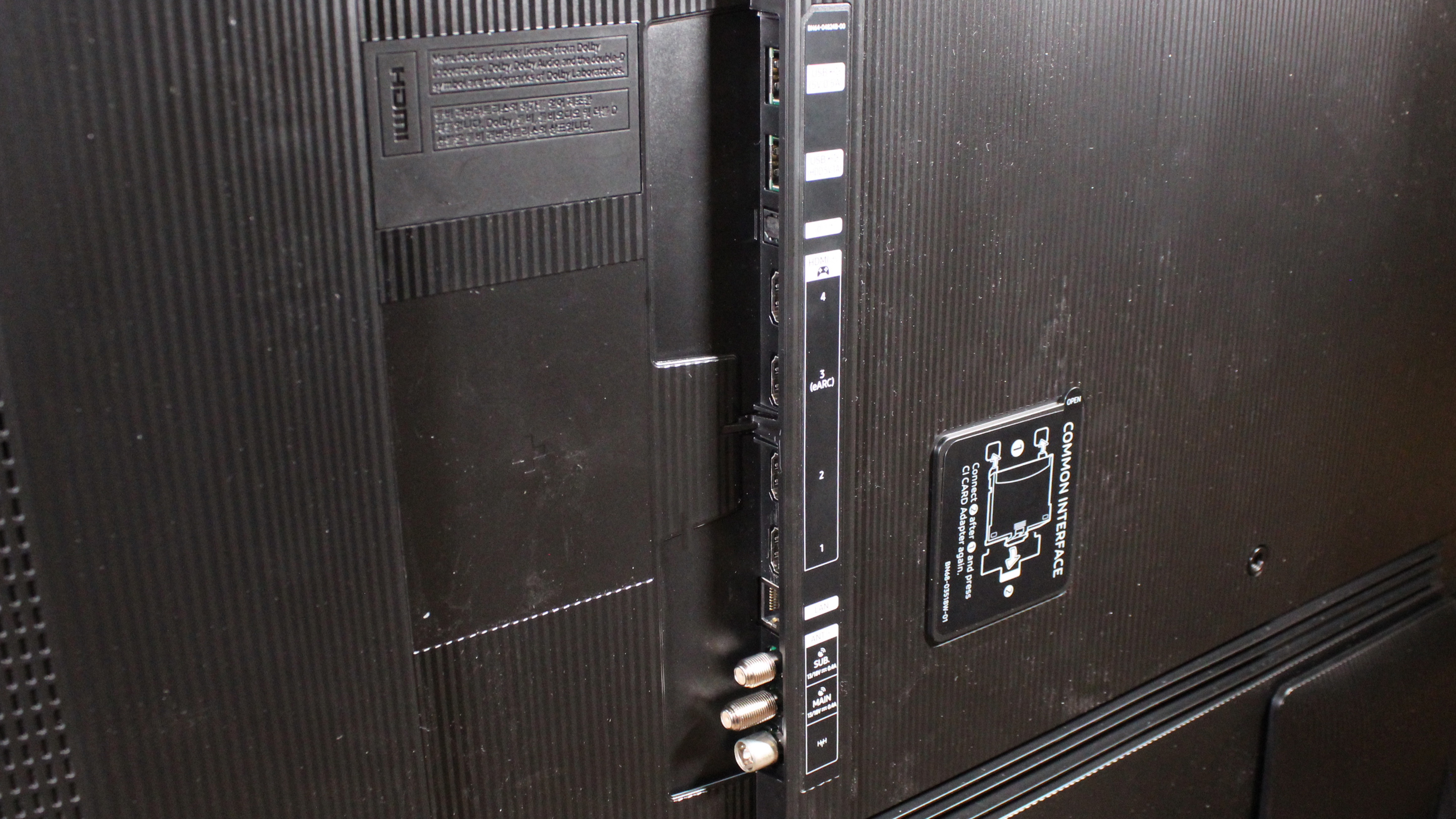
The most obvious difference from the earlier S95B model is that Samsung has dropped the One Connect Box, and instead builds the QN95C’s connections into the rear of the panel. Presumably this is for cost-benefit reasons, but it’s a shame because the box was a clever idea and unique to Samsung (and still supported elsewhere in the company's line-up, just not here).
Thankfully the four HDMI inputs are the 2.1 type and therefore very much tailored towards next-gen gamers, with support for frame rates up to 144Hz, VRR (Freesync Premium Pro and, unofficially, Nvidia G-Sync), and ALLM. The latter automatically switches to the Game Mode, which delivers a super-fast input lag of 9.8ms.
There’s also a useful Game Bar that provides gaming information and settings, while the Tizen-powered smart platform remains as responsive and comprehensive as ever, with all the main streaming apps such as Netflix, Prime, Disney+, Apple TV, and the UK TV catch-up services.
SAMSUNG QN95C REVIEW: PICTURE QUALITY
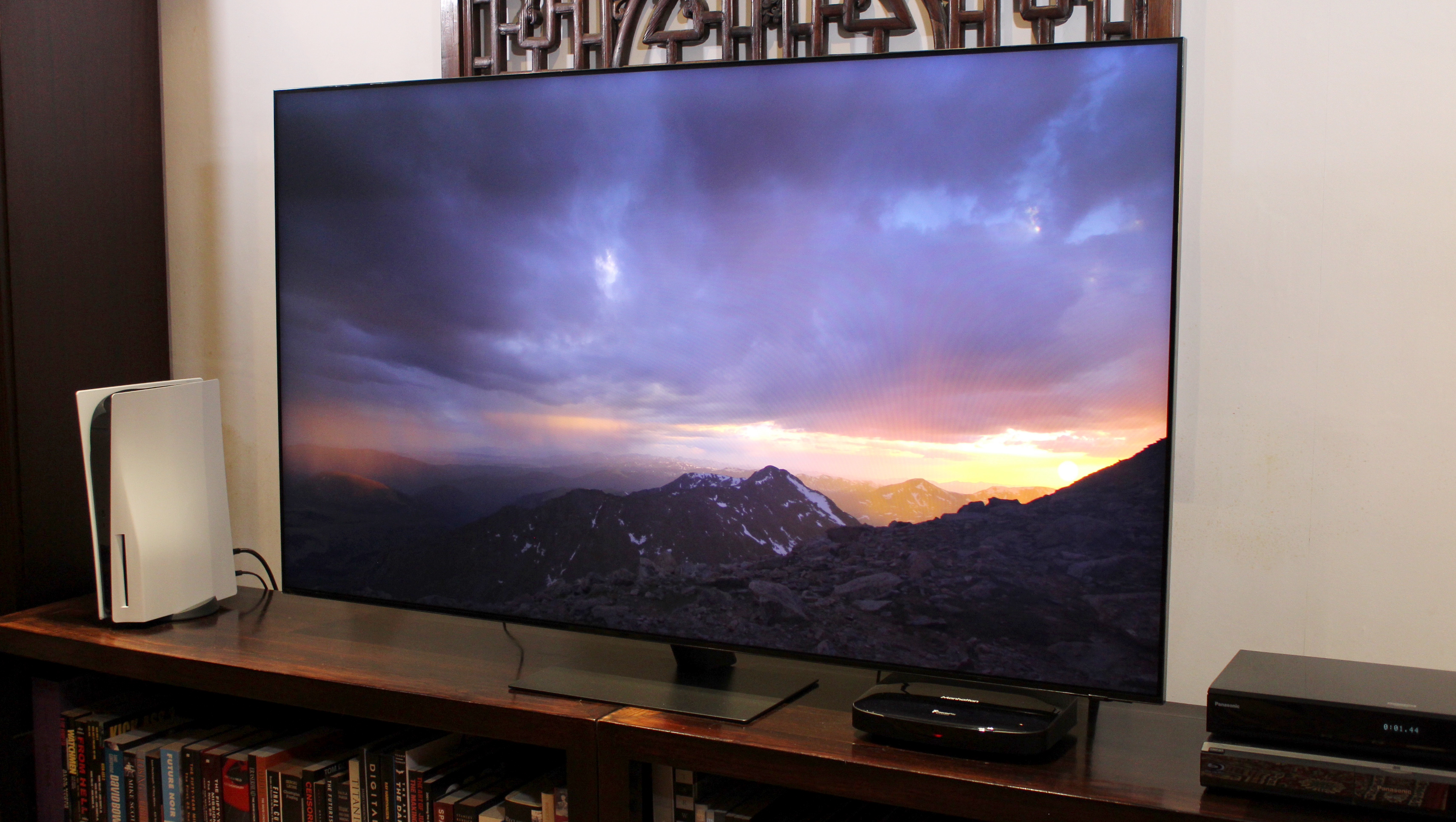
The Samsung QN95C delivers outstanding image quality that rivals any OLED on the market. The blacks are deep and inky, while the highlights are bursting with brightness, and unless you feed this TV an absolute contrast torture test, the images are free of blooming around bright objects.
What’s more remarkable is that the QN95C is able to retain this amazing contrast performance even when dealing with the brightest HDR content. The 1,344 independent zones certainly play their part, but it’s also thanks to Samsung’s class-leading local dimming algorithm.
This contrast prowess is enhanced by 14-bit contrast mapping that brings out all the fine details in shadows just above black, while still retaining a pleasing depth. The processing also handles mixed content admirably, ensuring bright and dark parts of an image are perfectly rendered.
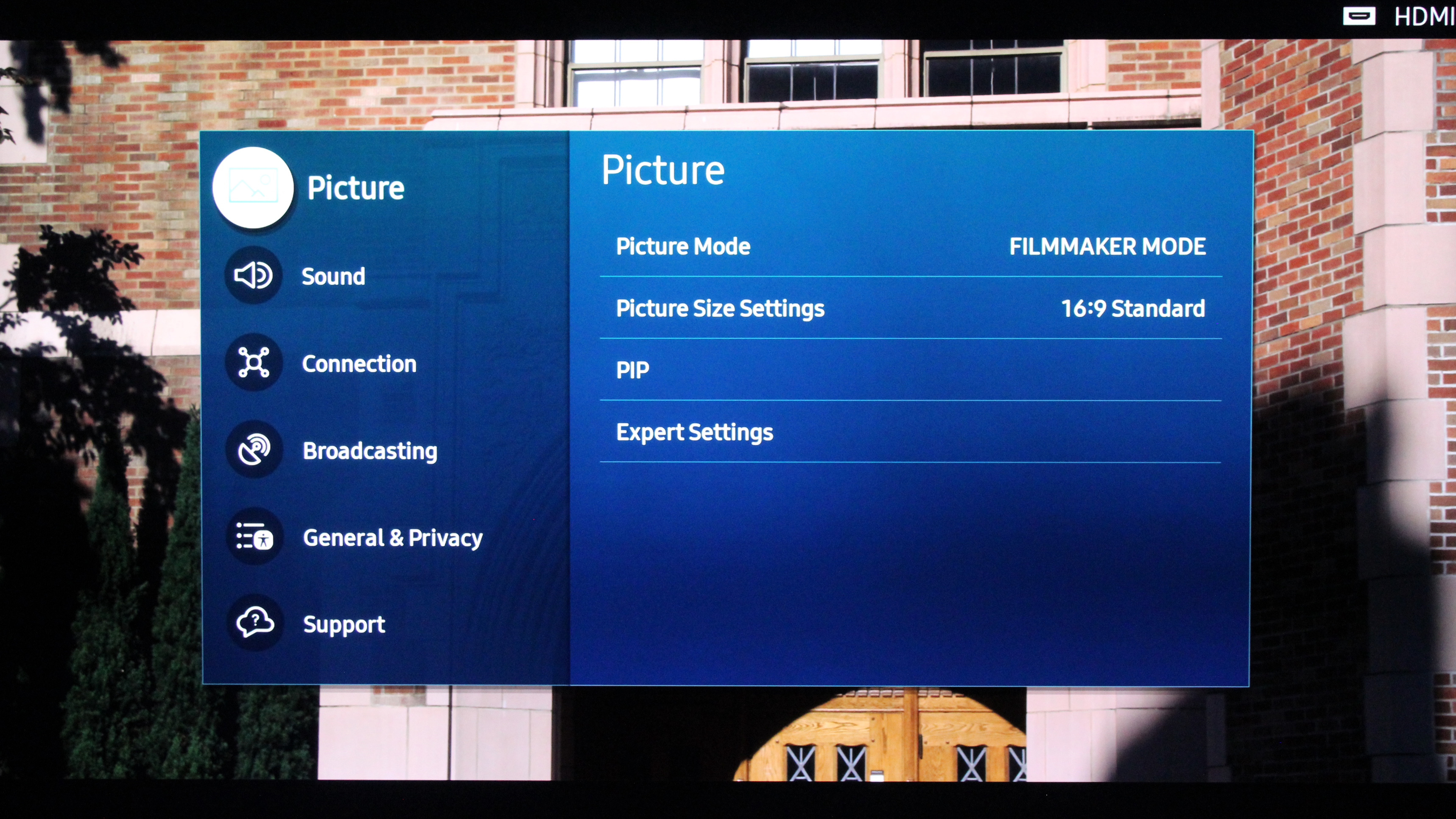
The overall screen uniformity is also excellent, with no clouding or banding, and the screen filter is an improvement on last year, absorbing light from the front, rejecting any ambient light in the room, and avoiding the annoying artefacts from lights at the side that plagued the earlier model.
The Filmmaker Mode provides accurate pictures, retaining the content creator’s intent. In this more accurate picture mode we measured* a peak brightness of over 2,000 nits on a 10% window, more than 700 nits on a full-field pattern, and 95% of the DCI-P3 colour space.
The tone mapping was absolutely spot-on in all our tests, taking advantage of the massive brightness and cutting-edge processing to produce impactful HDR images with specular highlights free of clipping, along with saturated colours, deep blacks and detailed shadows that weren’t crushed
The motion handling was also excellent, which means films and TV dramas delivered at 24p benefit from movement that is reproduced without any unwanted judder or artefacts. There’s extra processing for fast-paced sports if necessary, and support for 144Hz higher frame-rate gaming.
*To test the Samsung QN95C we used Portrait Displays Calman colour calibration software.
SAMSUNG QN95C REVIEW: SOUND QUALITY
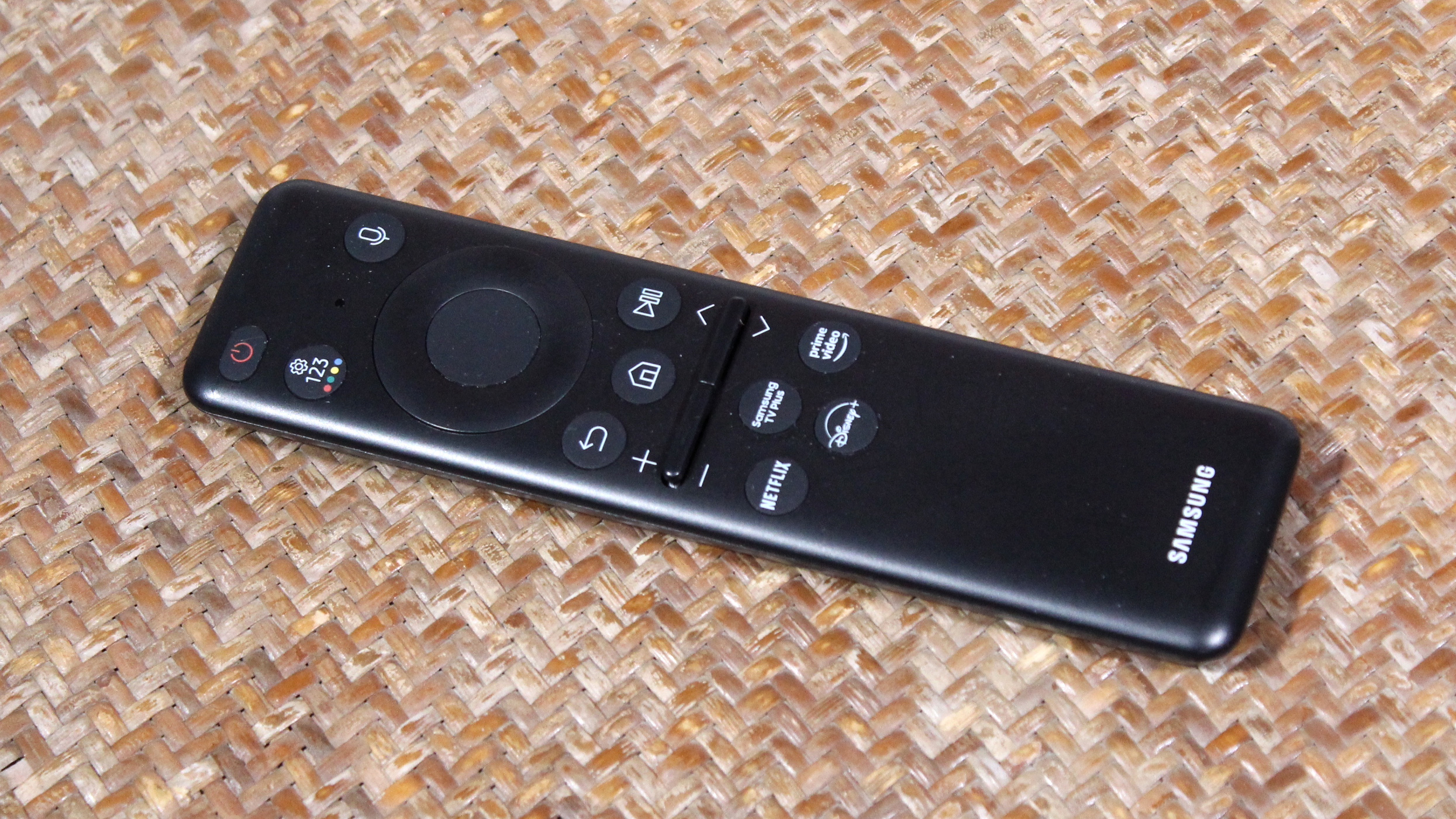
The Samsung QN95C sounds great, thanks to the inclusion of Dolby Atmos and a speaker system with drivers along the bottom, sides and top, plus a couple of woofers. The result is a surprisingly big soundstage that fills the space around the TV, and delivers decent amounts of bass.
Object Tracking Sound Plus certainly makes a difference, with height speakers that add another layer to the sonic presentation. Sounds are clearly moving around and above the TV to match specific objects on screen, while dialogue always remains clear, focused and intelligible.
The inclusion of onboard Dolby Atmos decoding, along with the ability to send Atmos back via ARC, is also very effective. Object-based audio has more height, width and depth with Atmos content, and in general this sonically capable TV delivers impressive sounds with any content.
If you do want an additional soundbar for greater surround presence and volume, however, then check out the best soundbars for Samsung TVs to give you a good idea of what's available.
SAMSUNG QN95C REVIEW: DESIGN & USABILITY
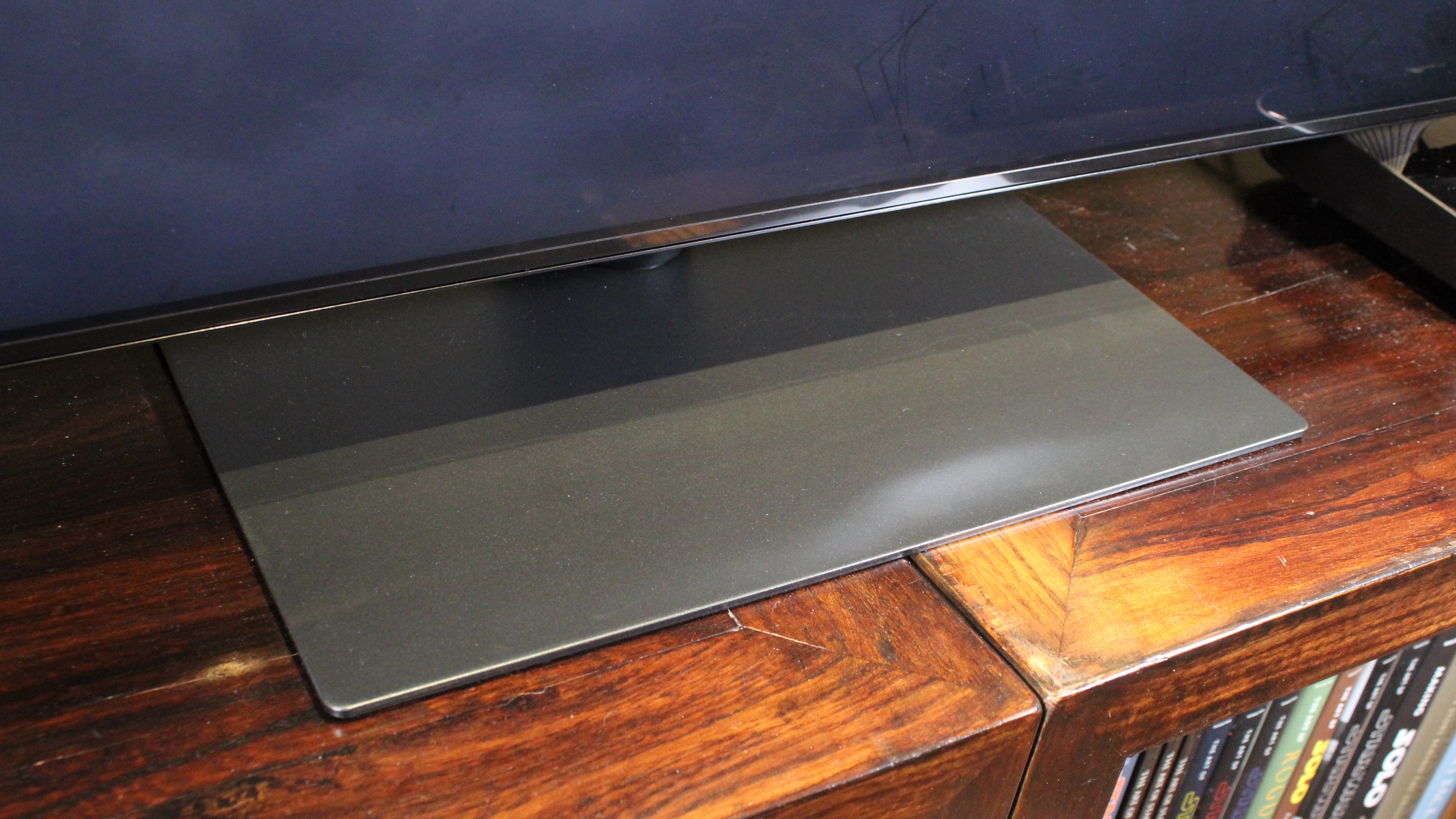
The Samsung QN95C uses the company’s Infinity One design, which sports a contemporary finish and sleek styling. The Infinity Screen is bezel-less, the build quality excellent, and the elegant angled stand provides solid support while having a smaller footprint for narrower surfaces.
The QN95C can also be wall-mounted using either a VESA or Samsung’s Slim Fit bracket, although in the absence of the One Connect box all the cables have to go to the TV, which isn’t as tidy. On the plus side, the panel remains surprisingly slim considering everything it contains.
In addition to the four HDMI inputs, there are also two USB 2.0 ports, twin tuners for terrestrial and satellite broadcasts, a CI slot, an optical digital output, and an Ethernet port. In terms of wireless connectivity, there's Wi-Fi, Bluetooth and support for Apple AirPlay 2.
The QN95C ships with two controllers: a standard black zapper festooned with buttons, and a pared-down Solar Cell remote intended for day-to-day use. Sadly, the latter may feel small if you have big hands, and rather plasticky considering the QN95C is the flagship 4K TV for 2023.
However, the Solar Cell remote is very eco-friendly, not only because it’s rechargeable, but also because it’s made of recycled plastic. The batteries aren’t just recharged using the solar panel built into the back, they also repurpose the Wi-Fi signals beaming around your house.
In terms of other control options, there’s the SmartThings app, which makes setup easier, along with Bixby built-in, and the ability to work with both Amazon Alexa and Google Assistant for a degree of voice control. You can even access Siri via Apple’s AirPlay 2 if that’s your preference.
SAMSUNG QN95C REVIEW: VERDICT
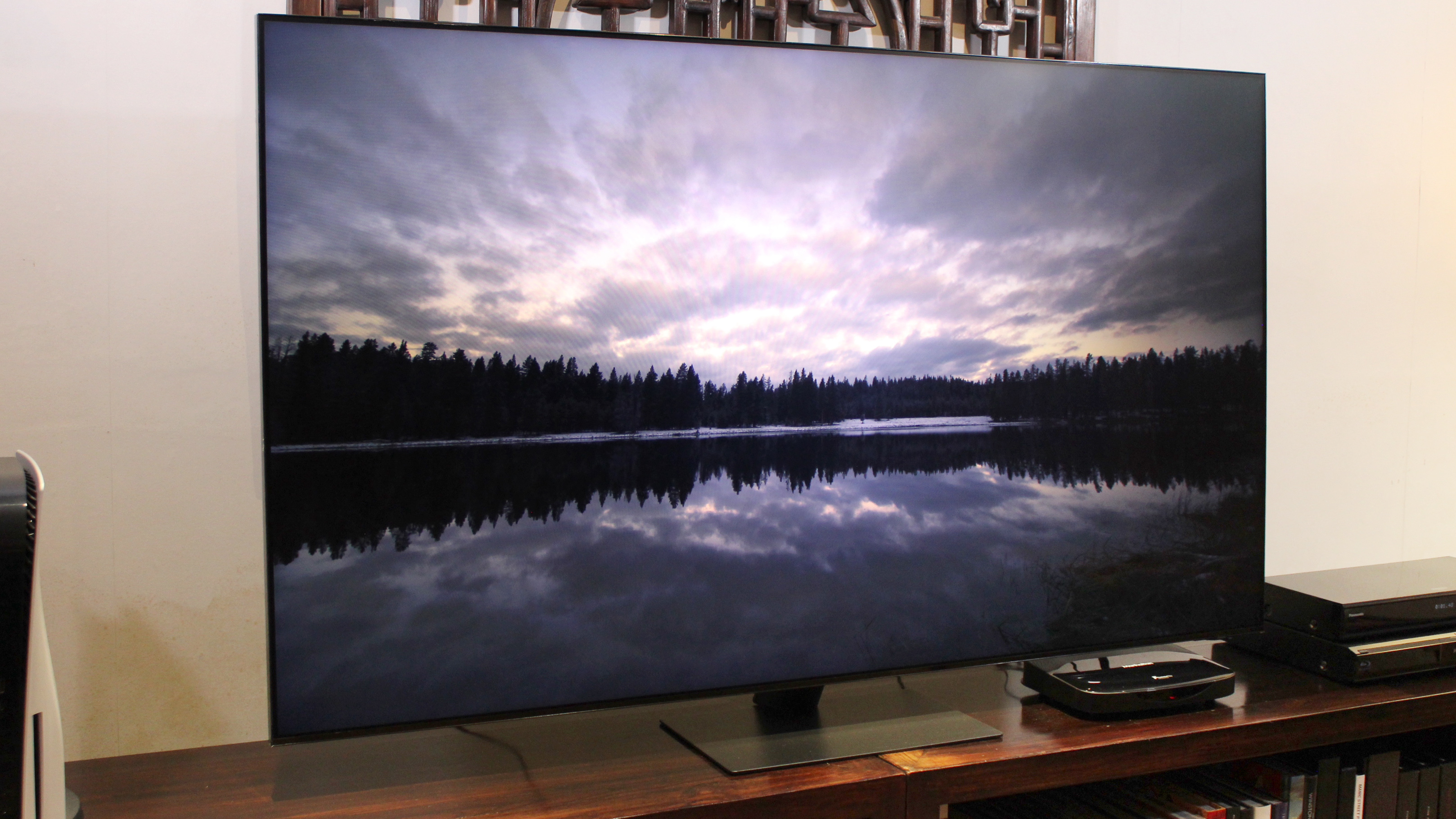
We’re not being hyperbolic when we say that the Samsung QN95C is the equal of (and often superior to) the best OLED TVs on the market. The increased zones and class-leading local dimming system ensures deep blacks, piercing highlights, and exceptional contrast with plenty of shadow detail.
The image processing is state-of-the-art, while the purity of Quantum Dot colours, and the inherent brightness of QLED results in stunning HDR, with saturated colours and highlights that really pop. It sounds great too, thanks to an immersive audio system and support for Dolby Atmos.
While the QN95C certainly couldn’t be considered cheap, the design is stylish and the build quality excellent, so you feel you’re getting your money’s worth. It also has a comprehensive smart platform and extensive next-gen gaming features that make it an accomplished all-rounder.
It’s not perfect of course, the local dimming can occasionally get tripped up by very challenging material, and Samsung continues to give Dolby Vision the cold shoulder, but otherwise this Neo QLED 4K TV is hard to fault, and sure to delight anyone looking for a capable high-end TV.
ALSO CONSIDER
In terms of direct competition, Sony’s new X95L line-up of 4K HDR TVs all use Mini LED backlight. The X95L is due to arrive in 65-, 75-, and 85-inch screen sizes, although prices haven’t been announced at the time of writing.
If you’d prefer an OLED TV, you can pre-order Samsung’s S95C QD-OLED or LG’s G3 Evo OLED, both of which promise highlights as bright as the QN95C. The S95C comes in 55-, 65- and 77-inch sizes at comparable prices to the Samsung, while the G3 offers 55-, 65-, 77- and 85-inch sizes for a little more cash.
Sign up to the T3 newsletter for smarter living straight to your inbox
Get all the latest news, reviews, deals and buying guides on gorgeous tech, home and active products from the T3 experts
Steve Withers is a professional calibrator and freelance journalist who regularly contributes to T3, reviewing audio and video products, and writing articles. Steve has been writing about audio and video products for over ten years and, along with T3, he also contributes to TechRadar, Trusted Reviews, Expert Reviews, AVForums, Pocket-lint, Home Cinema Choice, and Wired. Steve is Level 2 certified with THX, the Imaging Science Foundation (ISF) and the Home Acoustics Alliance (HAA). As such, he remains abreast of all AV technology developments and the latest industry standards as we transition into a new era in home video and audio.
-
 Leaked AirPods prototype looks like Nothing... literally
Leaked AirPods prototype looks like Nothing... literallyAnd we are here for them
By Britta O'Boyle Published
-
 OnePlus Watch 3 lands in the UK with a flurry of freebies and a huge discount
OnePlus Watch 3 lands in the UK with a flurry of freebies and a huge discountThe new titanium-clad smartwatch brings 120-hour battery life, ECG health checks, and some serious launch offers
By Matt Kollat Published
-
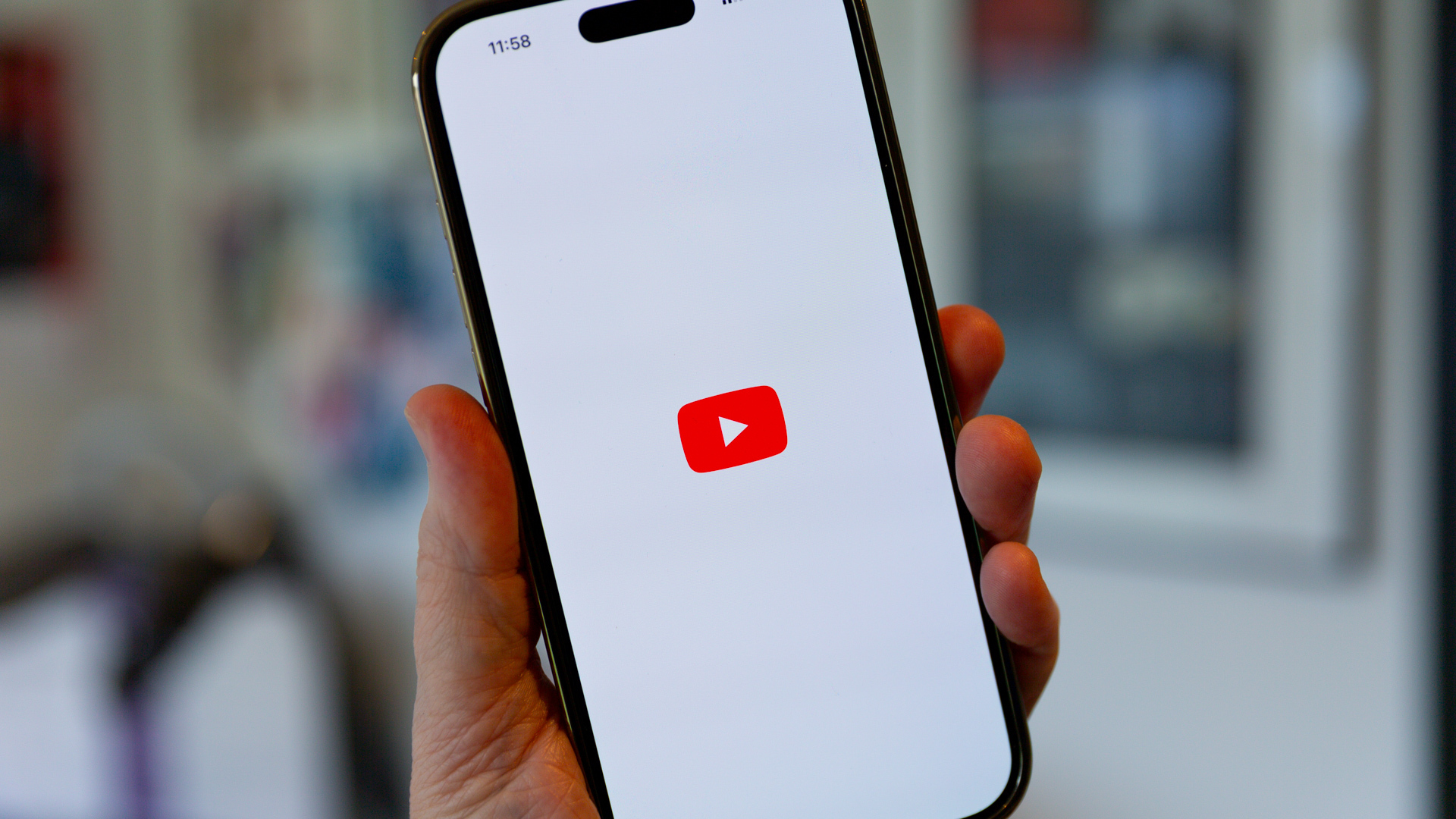 Future YouTube feature could put an end to your doomscrolling
Future YouTube feature could put an end to your doomscrollingAnd that's something we would love to see
By Britta O'Boyle Published